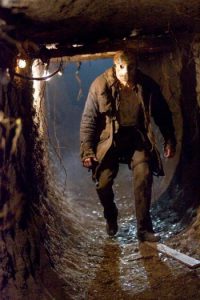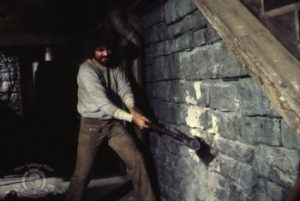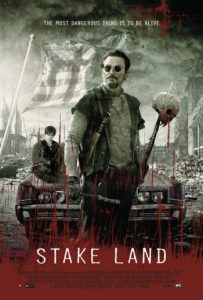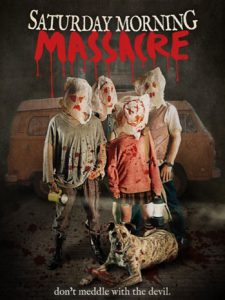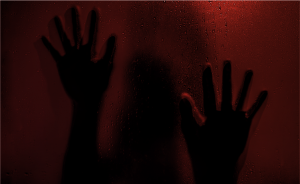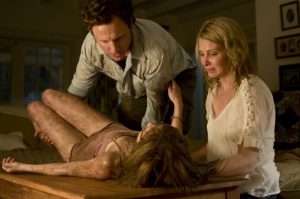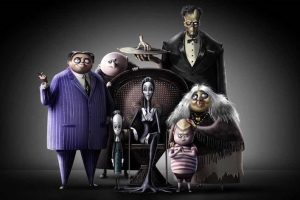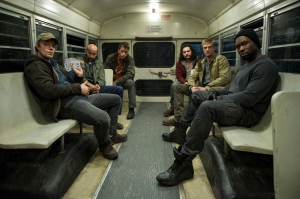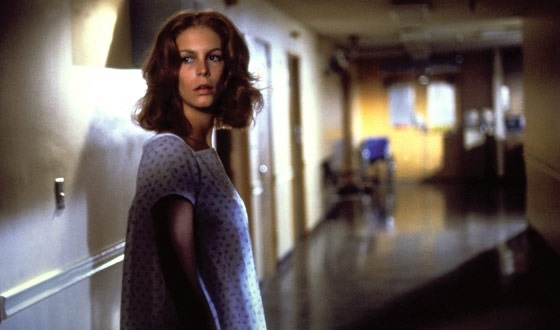
Screams, Scares, or Slashers: What Makes a Horror Movie?
When video stores were still in their heyday, nothing was quite as exciting as a trip to those hallowed aisles. Remember before Netflix and its thousands of titles, when just a hundred choices felt overwhelming?
On one auspicious visit when I was about ten years old, my mom and I were naturally perusing the horror section. As I examined the designs on the box art, I noticed the rather tame Psycho sharing shelf space with the likes of Pumpkinhead and Pet Sematary.
“How is that horror?” I asked. “There’s nothing supernatural at the Bates Motel.”
“Well,” my mom replied matter-of-factly. “It would be pretty horrifying if it happened to you.”
“True,” I said and started pointing out other non-supernatural films.
Henry: Portrait of a Serial Killer? Pretty horrifying if it happened to you, I repeated my mom’s pithy phrase. Deliverance? Again, not my idea of a good time, so I guess it qualifies. But, I thought to myself, isn’t horror more than that?
And thus, amongst the now-abandoned annals of VHS, I began a lifelong quest to delineate what it means to be a horror film. Yet two decades later, the definition is just as opaque. Sure, academics have spent countless pages writing diatribes about the topic, and every fan has an opinion to be posted on discussion boards, but does that get us any closer to characterizing the elusive genre?
Let’s examine the usual markers that make a horror movie, and see where we stand. And after reading my take, be sure to let me know yours in the comments below.

A Monstrous or Supernatural Element
Following the ‘if there’s smoke, there’s fire’ paradigm, a roster that includes ghosts, zombies, or a myriad of other monsters usually lands a film in the horror category. On the surface, this seems to be one of the more straightforward signs of the genre.
But wait a blood-loving minute. How many of you really want to claim the Twilight series for Team Horror? The dreadful saga boasts vampires, werewolves, and a violent birth scene that if it wasn’t for the buckets of embarrassing CGI, could make David Cronenberg himself proud (which might finally provide an explanation for how the director got the idea to cast Robert Pattinson in Cosmopolis). Even without performances so bad they’re terrifying, Twilight sounds pretty much like standard horror fare, but I doubt anyone reading this wants that sparkly box set anywhere near their Halloween collection. Bella Swan might get some of her monosyllabic moping on Lori Strode. Horror fans worldwide perish the thought.
And though an endless stream of sequels makes some villains appear invincible, a garden variety killer doesn’t need any special powers to wreak havoc. Plenty of movies seem firmly rooted in our current reality and still earn the horror title. While anyone with any taste eschews Twilight in favor of Dracula, a pack of monsters or a gaggle of ghosts isn’t a necessary ingredient for the genre. Please don’t haunt me for saying that, Indian burial ground spirits. I forever respect your dead-raising, face-melting prowess.

A Body Count
Cadavers galore. Plenty of enthusiasts don’t consider it horror without a double-digit body count. They say the more deaths, the merrier.
But simply displaying a pile of corpses does not by default make a horror film. Otherwise, scores of disaster flicks like The Day After Tomorrow or Independence Day or, dear gods, The Poseidon Adventure would have to count. Fortunately for everyone everywhere, nobody dares to claim such blasphemy.
You could argue that to classify as horror, the victims need to be stalked individually a la the slasher archetype. Under those requirements, though, the 1971 thriller Klute should make the cut. The film features a single killer who’s violently picking off prostitutes in the Big Apple. There’s death, there’s stalking, and there’s even sex, but the movie’s rarely, if ever, called horror. Maybe it’s just because Jane Fonda’s in it. No self-respecting genre wants to claim her.
And how does Halloween fit in? The corpse tally is less than a half dozen, and only four demises take place on-screen. Yet it’s an undisputed member of the horror family. Moreover, does anyone need to die? Although sometimes forgotten in the catalog of the genre, April Fool’s Day is actually a no-kill slasher. But despite a non-existent death score, the film really can’t be categorized anywhere other than horror.
Taken altogether, this means in spite of our blood and guts worship, carnage is certainly no requirement. Sorry, gorehounds. Don’t take the news too hard. We’re all a little disappointed.

A Crazed Killer
Okay, so this one should be easy, right? You’ve got a homicidal maniac out chopping people to bits. That’s got to be a horror movie, yes? Well, probably.
But if an assassin with a sketchy vendetta makes it genre, what stops a gangster film from being considered horror? Is it because the Corleones keep it all business-like whereas Leatherface and his clan are just cutting up locals and tourists all willy-nilly? Maybe it’s that revolvers have a distinguished air whereas chainsaws are so gauche. Either way, Grandpa would probably be proud to share the dinner table with a family known for putting horse heads in an enemy’s bed. The old man might even be able to give them a few slaughtering tips.
Now gangsters do seem to fare better in the real estate market than the proverbial slasher killer. The Sawyer abode has been mistakenly thought to be abandoned, and in the first Halloween, the Myers house is a permanent ‘for sale’ fixture of Haddonfield. Camp Crystal Lake sits empty, and Billy in Black Christmas is a straight-up squatter. The Corelones, on the other hand, have a nice place on Lake Tahoe while Tony Montana and his gang chill in a Miami mansion. Even so, you have to assume the killers in Hostel are rather well-to-do, being able to pay for murder abroad and all, so they sort of spoil the whole rags-to-bloody-riches story that paints horror killers as an impoverished lot. Otherwise, all Leatherface would need to do is sport a nice Italian suit and keep some paperwork on his kills, and he might qualify for Fredo’s vacancy.
Perhaps it’s the sheer joy that makes a crazed killer. Chop Top, Hannibal Lecter, and pretty much every killer in the Scream series adore a good death. Michael Corleone, however, takes no pleasure in his first murder and keeps a cool exterior when he commissions every hit thereafter. But another Michael (of the Myers variety) also seems rather reticent about his homicidal delight as does Jason Voorhes, Pinhead, and many others. And keeping with the Al Pacino theme, that whole ‘say hello to my little friend’ scene is about as gleeful as Freddy Krueger in a room full of narcoleptics.
So at the end of the day, the difference between Scarface and Leatherface is thin, almost nonexistent. And not every horror film follows a slasher prototype anyhow, so while a crazed killer may be a well-known characteristic, it’s certainly not the single trait that identifies the genre.

Unflinching , Primordial Terror
Many writers and fans describe the allure of horror as being primal. The idea is that we enjoy the genre because we like to be afraid. Adrenaline junkies through and through, audience members want to experience primitive fear in a safe environment and live to tell about it.
But that argument sort of disregards the horror-comedy. Maybe you don’t want to claim Young Frankenstein or Gremlins, but what about Evil Dead II, Re-Animator, Beetlejuice, Fright Night,or Return of the Living Dead? Even with all its savagery, The Texas Chain Saw Massacre is often called a black comedy. If the fundamental appeal of horror comes from facing and surviving our fears, then there’s no reason to throw in laughs to dilute the dread. You could say it makes the fright more palatable, but you don’t get much claim on endurance if the film goes for humor as often as scares.
And honestly, let’s face it. Terror is entirely subjective. For those of us who grew up on gore, almost nothing’s scary. If my categorization of horror films was based only on what frightened me, then I couldn’t include classics like The Exorcist, The Shining, Suspiria, or a slew of others that are acknowledged champions of the genre. Actually, I could probably count the number of films on one hand that did freak me out, and many hardcore fans feel the same.
Okay, maybe we’re a biased group. So should a film earn the label if we assume someone out there might be scared of it? By that rationale, let’s classify all rom-coms as horror movies because their by-the-number plots and rampant sexist stereotypes terrify me way more than a ward of Regans or an army of Jack Torrances.
So where does this leave us? If a film isn’t required to feature gore, monsters, or killers, then what are the requirements? In fact, this whole line of reasoning is starting to feel like a philosophy theorem. Is there even such a thing as a horror movie? I slash, therefore I am?
In real terms, we’re in a far better place than most reductionists will want you to believe. A critic or an academic or a rigid fan will likely disagree, but horror can be almost anything. The genre is the epitome of plasticity. A film can have drama, action, comedy, mystery, even romance, and still not cede its place squarely in the horror category.
And despite the primal instinct argument, horror holds appeal far beyond the spine-chilling, the revolting, or the horrifying. At risk of sounding too Freudian, a slasher killer might represent our feelings of powerlessness against the system—or maybe just your awful boss. Vampires can be a metaphor for our obsession with youthfulness or a sexual euphemism. Ghosts can signify our inability to escape the past. And zombies can mean everything from unchecked commercialism to our unspoken worry that the medical industry and the government may join forces to weaponize a super-virus. Every single aspect of life can be explored within the horror genre.
That’s why after a century of films, we’re nowhere near exhausting our horror options, even if routine Hollywood flicks might make you think otherwise. Horror has always and will always be a viable outlet for our hopes, fears, desires, and nightmares. Whatever you want or whatever you dread, no arbitrary prerequisites or standard tropes can stop a visionary from inventing a new way to explore the human condition. There’s a reason that every major director from Kubrick to Raimi and Hitchcock to Spielberg has made a horror film. They’re just too perfect to resist.



